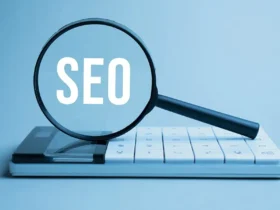In today’s fast-paced and interconnected world, global supply chains are under increasing pressure to become more efficient, resilient, and adaptable. The rapid advancement of technology has introduced a wealth of opportunities to optimize operations, yet many organizations struggle with the adoption of these innovations. From infrastructure limitations to resistance to change, various barriers prevent businesses from fully leveraging technology to enhance supply chain performance. Overcoming these barriers requires a strategic approach that addresses technical, cultural, and economic challenges.
Understanding the Barriers to Tech Adoption
There are several key barriers that hinder the adoption of technology in global supply chains:
- High Implementation Costs: Many advanced technologies, such as artificial intelligence, blockchain, and the Internet of Things (IoT), require significant financial investment. For small and medium-sized enterprises (SMEs), these costs can be prohibitive.
- Legacy Systems and Infrastructure: Many businesses still rely on outdated systems that are not compatible with modern digital solutions. Upgrading these systems requires both time and financial resources.
- Resistance to Change: Employees and management may resist new technologies due to fear of job displacement, lack of technical skills, or skepticism about the benefits of adoption.
- Cybersecurity and Data Privacy Concerns: As supply chains become more digitized, they become more vulnerable to cyber threats. Businesses are often reluctant to adopt new technologies due to concerns about data breaches and compliance with international regulations.
- Complexity and Lack of Standardization: The global nature of supply chains means that companies must navigate different regulations, operational practices, and technology standards across multiple regions. This complexity makes seamless technology adoption difficult.
Strategies to Overcome These Barriers
To successfully integrate advanced technology into global supply chains, businesses must take a strategic and systematic approach. Here are some key strategies:
- Investing in Scalable and Cost-Effective Solutions
Businesses should prioritize technologies that offer scalability and cost-effectiveness. Cloud-based solutions, for example, allow companies to adopt advanced tools without the need for heavy infrastructure investments. Open-source software and flexible licensing models can also reduce upfront costs.
- Modernizing Legacy Systems
A gradual approach to modernization, such as implementing application programming interfaces (APIs) to connect existing systems with new technologies, can help businesses transition without major disruptions. Companies can also explore phased implementation strategies to spread costs over time.
- Encouraging a Culture of Innovation
Organizations must foster a culture that embraces technological change. Providing employees with training programs, workshops, and incentives to engage with new systems can help ease resistance. Change management strategies should involve clear communication about how technology will improve workflows rather than replace jobs.
- Strengthening Cybersecurity Measures
To address cybersecurity concerns, businesses must implement robust security protocols, including encryption, multi-factor authentication, and continuous monitoring systems. Compliance with international cybersecurity standards and regulations will also build trust among stakeholders.
- Promoting Industry-Wide Collaboration
Standardization and collaboration across industries are essential to overcoming technological fragmentation. Businesses can work with industry consortia, regulatory bodies, and technology providers to develop universal standards and best practices that facilitate smoother integration.
The Role of Emerging Technologies
Innovative technologies are playing a pivotal role in transforming supply chains. One such advancement is autonomous supply chain planning via machine learning, which enables businesses to optimize inventory levels, predict demand fluctuations, and mitigate risks in real time. By leveraging artificial intelligence and machine learning, companies can achieve greater accuracy in forecasting and decision-making, leading to enhanced efficiency and cost savings.
Blockchain technology is also streamlining supply chain operations by enhancing transparency and traceability. With real-time tracking of goods and automated smart contracts, businesses can reduce fraud, improve compliance, and increase accountability.
IoT devices are further revolutionizing supply chains by enabling real-time monitoring of shipments, warehouse conditions, and equipment performance. This connectivity helps businesses proactively address issues before they escalate, improving overall reliability.
Conclusion
The adoption of advanced technology in global supply chains is no longer optional—it is a necessity for companies looking to stay competitive in a rapidly evolving market. While barriers such as high costs, resistance to change, and cybersecurity concerns remain significant challenges, they can be overcome through strategic investments, modernization efforts, workforce training, and industry collaboration. By embracing cutting-edge solutions like autonomous supply chain planning via machine learning, blockchain, and IoT, businesses can unlock new levels of efficiency, agility, and resilience in their supply chains. The future belongs to companies that are willing to embrace innovation and proactively address the challenges of technology adoption.












